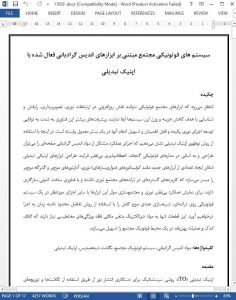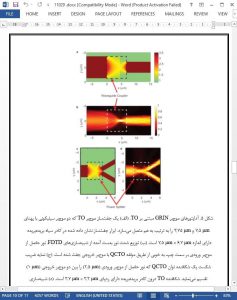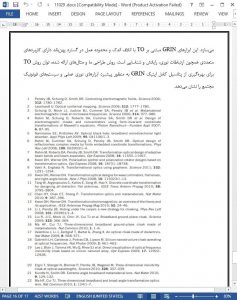Integrated photonics is expected to play an increasingly important role in optical communications, imaging, computing and sensing with the promise for significant reduction in the cost and weight of these systems. Future advancement of this technology is critically dependent on an ability to develop compact and reliable optical components and facilitate their integration on a common substrate. Here we reveal, with the utility of the emerging transformation optics technique, that functional components composed of planar gradient index materials can be designed and readily integrated into photonic circuits. The unprecedented design flexibility of transformation optics allows for the creation of a number of novel devices, such as a light source collimator, waveguide adapters and a waveguide crossing, which have broad applications in integrated photonic chips and are compatible with current fabrication technology. Using the finite-difference time-domain method, we perform full-wave numerical simulations to demonstrate their superior optical performance and efficient integration with other components in an on-chip photonic system. These components only require spatially-varying dielectric materials with no magnetic properties, facilitating low-loss, broadband operation in an integrated photonic environment.
INTRODUCTION
Transformation optics (TO) provides a systematic method to manipulate light propagation by exploiting spatial mappings and distributions of constituent materials.1,2 Based on the property that Maxwell’s equations are invariant under coordinate transformations, TO represents a powerful new design tool in controlling the trajectory of light and creating novel devices, such as invisibility cloaks,3 field concentrators4 and perfect ‘black hole’ absorbers.5 The important class of embedded coordinate transformations6 stands out by allowing discontinuities along transformation media boundaries. This unique property has facilitated the development of some of the more practical, but nonetheless remarkable TO devices, including reflectionless beam bends and splitters,7 polarization rotators8 and various flat lenses.9–11
CONCLUSIONS
In summary, we have designed and demonstrated several TO-inspired GRIN components for integrated photonic systems using full-wave FDTD simulations. An embedded QC transformation approach is employed, yielding devices comprised of isotropic, dielectric-only materials. These TO components were shown to be able to achieve efficient light coupling between photonic elements, such as optical sources and waveguides, while exhibiting great design flexibility. Such TO-based GRIN devices, with low losses and broadband operation, have a wide range of applications including optical communications, computing and sensing. Our design approach and examples illustrate the power of the TO methodology to bring GRIN optics into their full potential for advancing practical optical devices and integrated photonic systems.











